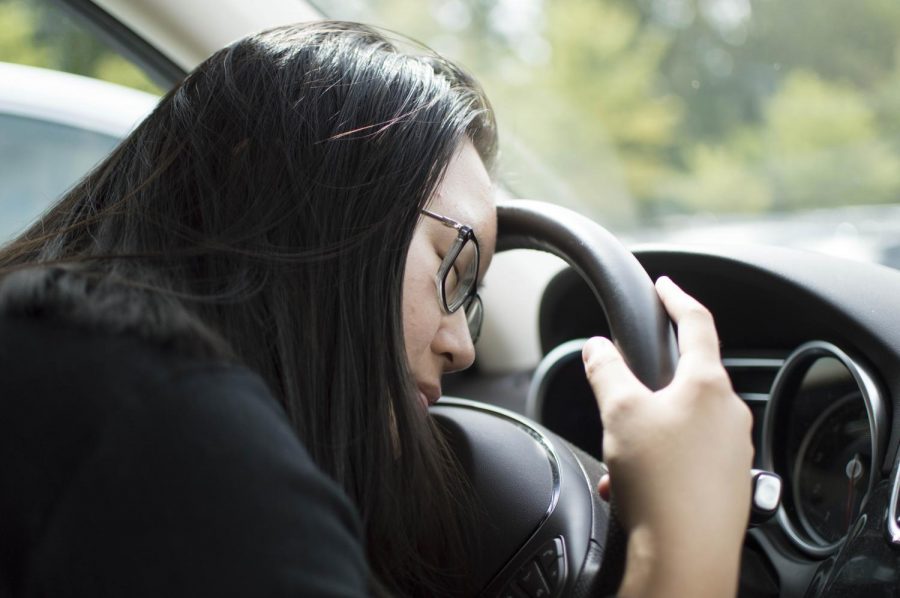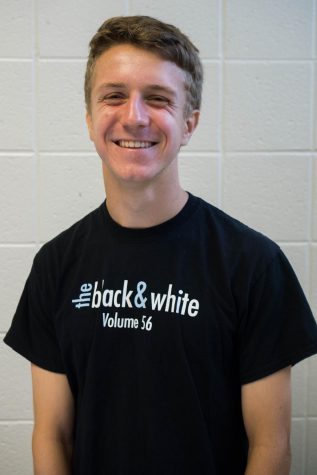Drowsy driving: an overlooked danger to teen drivers
A student falls asleep at the wheel. Though typically overshadowed in publicity by texting-while-driving and drunk driving, many parents and specialists have recently shifted attention to drowsy driving. Photo by Annabelle Gordon.
October 1, 2017
After a long day of schoolwork and extracurriculars, junior Alex Lewis drove to an Orioles game in Baltimore at 9:00 p.m. 40 minutes into the drive, Lewis drifted off to sleep for a few seconds. When he opened his eyes, the road had curved and he had crossed over into the left lane.
Driving drunk or texting while driving are both well-known causes of accidents, but national attention has recently turned to a lesser-known danger: drowsy driving.
The National Highway Traffic Safety Administration estimates that at least 100,000 police-reported crashes each year are the direct result of driver fatigue. This results in 1,550 deaths, 71,000 injuries and $12.5 billion in monetary losses annually.
The effects of insufficient sleep can make driving highly dangerous, said Dr. Rashid Nayyar, a pulmonologist at Inova Alexandria Hospital.
“Concentration is impaired, reaction time slows down and patients can fall asleep at the wheel,” Nayyar said. “It has happened many times that patients fall asleep while driving or fall asleep at a stoplight.”
Students may prioritize rigorous academic and extracurricular schedules over sleep, leading them to drive drowsy. 56 percent of licensed teens in the U.S. have driven when they felt too tired to drive their best at least once and almost 10 percent have fallen asleep completely while driving, according to a study by Liberty Mutual Insurance.
While driving sleepy isn’t ideal, for some students, there is no way to avoid it and still get everywhere they need to go, Lewis said.
“I know people fall asleep at the wheel, so it’s best to prevent that, and not get in the car,” he said. “But if you need to get somewhere, sometimes you don’t have another choice.”
Drowsiness doesn’t just affect drivers operating on little to no sleep. A study by the National Sleep Foundation found that drivers who sleep less than eight hours nightly—which, according to a Black & White survey, includes 83 percent of Whitman students—are 33 percent more likely to crash than those who sleep eight or more hours nightly.
Students experience the effects of sleep deprivation in different ways while driving, but common symptoms include difficulty staying alert, focusing on objects and seeing things at a greater distance.
“Your eyes kind of start to close on you, and you can’t really control it—you zone out while you’re driving,” junior Gianni Rasetto said. “I kind of forget that I’m driving, so I focus on other things and then I realize I’m actually going 50 miles an hour and need to wake up.”
As the issue of drowsy driving becomes more well-known, students have become more aware of the risk they take in getting behind the wheel without sufficient sleep.
Junior Emmy Lane sees drowsy driving as a serious danger, and has previously pulled over to switch drivers when she has felt too tired to drive.
“It’s just as bad as drunk driving,” Lane said. “It’s the same effect: you’re not in the right mind. Your eyes get kind of blurry and glassy and they keep shutting. You need to be alert at all times when you’re driving.”










